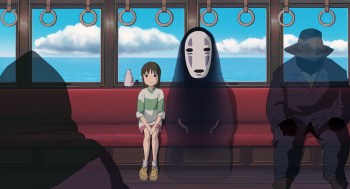
Hello Kitty turns 50

She’s arguably one of Japan’s best-loved creations. She’s had a varied career: animated television star, former Japanese tourism ambassador, and two-time visitor to the international space station. And according to Statistia, as of 2021, Hello Kitty also ranks as the world’s second highest-grossing media franchise behind Pokemon, and ahead of U.S. brands like Mickey Mouse and Star Wars.
Hello Kitty was born when a little-known Japanese artist Yuko Shimizu, who was working for Sanrio, put pen to paper and created a character titled “Unknown White Cat.” That Unknown White Cat, which became Hello Kitty, looks like a human version of a white Japanese cat with a red bow next to her ear. Ms. Shimizu told BBC Witness History about creating the character.
“It took a few attempts,” she said. “When it was first designed, it was printed on a small purse, a small purse released on sale with about six other character products. However, Hello Kitty far outsold the others.”
As Ms. Shimizu said, from her inception, the character was a success for Sanrio. It played on the Japanese culture of “kawaii,” which centered around the appeal of cuteness. And this cute creature has made billions for Sanrio. According to a 2022 Forbes report, the character has reportedly generated $84.5 billion worldwide.

Sanrio is also the company behind other characters like Pochako and Cinamoroll. Despite the characters’ popularity, the firm was struggling to be profitable after the most recent Hello Kitty boom in 2014 ended, and until Tomokuni Tsuji became the chief executive four years ago. Now, things are different.
“One of our business models is licensee business — which has become the core for our overseas strategy,” he said. “For a company like ours, we get paid royalty — and in return, our characters get the exposure in the market — so there’s an advertising effect.
In Singapore, residents and visitors can travel on a Hello Kitty cable car. It’s just one of the collaborations Sanrio has agreed to with several high-profile global brands. The shoe manufacturer Crocs recently introduced a line of Hello Kitty designs, and Starbucks used to sell Hello Kitty drinks.
Mr. Tsuji opened an office in Singapore to look after the Southeast Asia market in 2021, in addition to Hong Kong, Shanghai, and Australia. And those regional offices, as well as its Japanese headquarters, secure collaboration deals with global brands as part of the company’s marketing strategy.
Those collaborations have helped Hello Kitty and other Sanrio characters gain fans around the world.

“In terms of sales, Hello Kitty is still our strongest character,” Mr. Tsuji said. “The two big surges in our sales throughout our history were both created by Hello Kitty. But the issue was those jumps were not sustainable, which meant our performance had high volatility. That’s why we decided to create and market other characters, to reduce that volatility.”
Mr. Tsuji — who is the grandson of Sanrio’s founder — took the top job at the age of 31, making him the youngest CEO of a listed firm in Japan. So how did he turn it around?
“It’d be a lie if I said there was no pushback. But to reform a 60-year-old company, we couldn’t change based on what we already knew,” he said. “So I brought in external people with new and different knowledge and expertise, and explained to existing staff why they were needed to carry out our reforms — and they started to understand.”
The revamp in strategy has paid off, making Sanrio profitable once again, and transforming Sanrio into an almost $7 billion house of characters.
There’s a lot happening in the world. Through it all, Marketplace is here for you.
You rely on Marketplace to break down the world’s events and tell you how it affects you in a fact-based, approachable way. We rely on your financial support to keep making that possible.
Your donation today powers the independent journalism that you rely on. For just $5/month, you can help sustain Marketplace so we can keep reporting on the things that matter to you.

















